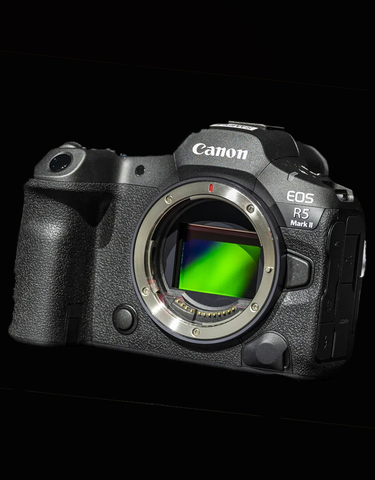
By adding more speed, accuracy and a bunch of new features, Canon has made the EOS R5 Mark II feel more like a new camera series rather than a mere upgrade. A second processor handles the extra burst speed, a stacked sensor minimizes rolling shutter distortions, and the new People Priority and Action Priority modes make it hard to miss a shot. While its buffer memory can struggle a little in some real-world scenarios and Eye Control AF is still hit and miss, the EOS R5 Mark II is arguably Canon's best pro camera yet.
There are quite a few significant differences between the two R5 generations that makes the Mark II feel more like an entirely new series rather than an upgrade. In fact, it has more in common with the Canon EOS R1 than the EOS R5, with the two new flagships sharing the headline features.
Pros
+
Faster, more accurate than the EOS R5
+
Stacked sensor minimizes rolling shutter effects
+
New near-perfect AF and subject tracking features
+
AI-powered in-camera editing features
Cons
-
Very slight loss in dynamic range
-
Eye Control AF doesn’t work for everyone
-
In-camera upscaling for JPEG/HEIF only
There are quite a few significant differences between the two R5 generations that makes the Mark II feel more like an entirely new series rather than an upgrade. In fact, it has more in common with the Canon EOS R1 than the EOS R5, with the two new flagships sharing the headline features. So, essentially, what the Nikon Z8 is to the Nikon Z9, the R5 II is to the R1 – a smaller, albeit higher-resolution, version.
While the sensor resolution remains at 45MP, the R5 II now uses a stacked design that enables speedier readouts to minimize rolling shutter distortions, just like on the Nikon Z8. This, however, has resulted in a slight loss of dynamic range compared to the R5, but not so much that it will bother most photographers in real-world use.
- The R5 II gains a second imaging processor – working in conjunction with the Digic X chip, the Digic Accelerator enables burst speeds of up to 30fps when shooting RAW, with an additional 15 frames available with pre-recording enabled. The Nikon Z8 tops out at 20fps in RAW.
- Speed aside, the autofocus accuracy here is also better than what I experienced with the original R5 and, during my testing, the Mark II was more than ready to take on a challenge straight out of the box. In fact, I think the AF performance here is better than the Nikon Z8, which is my daily shooter. Not only has Canon improved its AF algorithm, it’s also added a couple of new features that make it really hard to miss a shot – you can select specific people to prioritize as your main subject in People Priority mode, while the new Action Priority feature uses deep-learning algorithms to tell the camera when a specific action is about to take place and automatically shift the focus point accordingly. The latter, however, is still a work in progress with only three team sports supported at launch.
- Canon has been using Eye Control AF in its pro sports cameras – namely the EOS 1D X Mark III DSLR and the EOS R3 – but it’s now available on the R5 II. While it’s been improved in some ways, it’s still hard to calibrate it for all users.
- Also new are a couple of AI-driven features that allow you to edit shots in-camera. The Image Upscaling feature can enhance resolution by 4x, after which you crop it in-camera to zoom in closer to a distant subject. It’s a handy feature to have, but only works for images shot as JPEG/HEIF and can be impractical for some photographers in the field. Photographers who find the need to push the limits of a camera’s ISO performance will be glad to know there’s a Neural Network Noise Reduction feature built in that can be employed, but you will need to shoot in RAW for this feature to work and the processed file is then saved as a JPEG.
- Video specs have also been improved, with the R5 II capable of shooting 8K/60p clips (versus 30fps on the R5) for up to 120 minutes with a new Cooling Fan Grip. Importantly, Canon’s C-Log2 – the video encoding option previously only available in the brand’s cinema cameras – is now supported on the R5 II, offering better dynamic range and easier color grading compared to C-Log3.
- Where it falls short compared to its predecessor is battery life. Despite a new high-powered LP-E6P pack, it’s only rated for 630 shots compared to the 950 that the LP-E6NH was rated for in the R5. To be fair, though, it is powering the new features and the higher speed.
- Of course, new features come at a cost, but if they all do what they say on the tin, then it could be argued that the R5 II would be a worthy investment despite a higher price. What makes it even more so is that this camera truly does make pro photography easy and, given it can handle any scenario, it's a remarkably versatile shooter as well. Thankfully, though, Canon has priced its flagship well, with only a 10% increase over the launch price of the EOS R5.
Add new comment